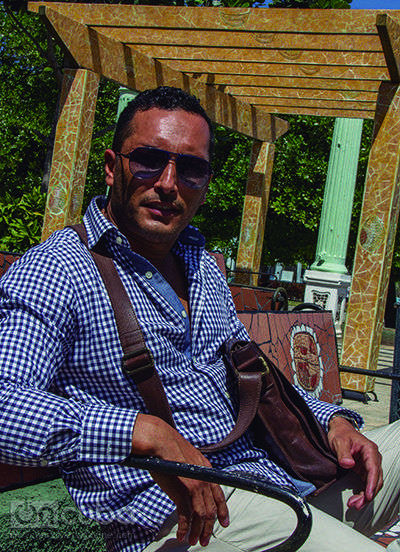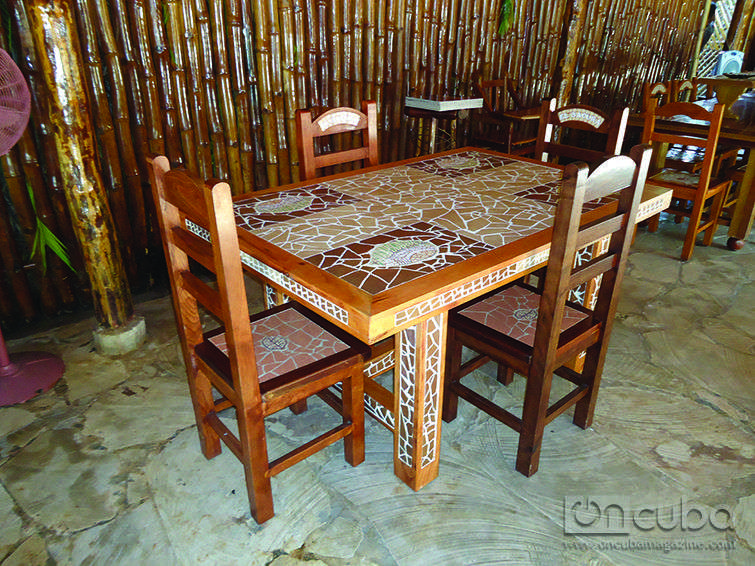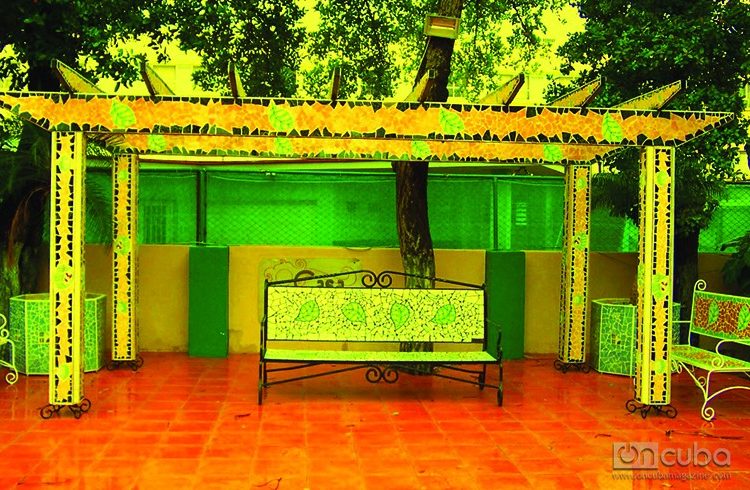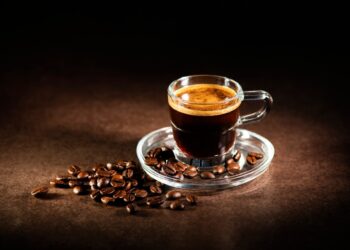Fernando Velázquez is a tireless artist. His passion for ceramics was inherited from his father, the noted ceramicist Fernando Velázquez. He is a member of the Cuban artists and artisans’ group, the Fondo Cubano de Bienes Culturales, and works with a diversity of formats and media. His work has become consolidated, a referent for ceramics in Cuba. For more than a decade, he has created work in which clay continues to be the central element, although iron and wood also play important roles. He also has a more commercial line of furniture and monumental sculpture, which bear his unmistakable hallmark.

Murals, paintings, pergolas, and other ornaments feature his allegories and distinct pictorial motifs. His domination of diverse techniques—drawing, sculpture and painting—have been a channel for conveying multiple messages. Themes include values, sentiments, nature, world history, a lack of communication, separation and silence. Nuances, textures, contrasting chromatic ranges and lots of imagination are incorporated into work featuring fish, plants, human figures and landscapes.
With language that is simultaneously frugal and lyrical, he revives fossilized animals, presenting them polychromatically in his mosaics, captured in interesting allegorical compositions of everyday life. Fernando is a perfectionist and is never happy with what’s been done. “An artist is always coming up with new things and is immersed in many plans. Right now I’m working on a project that is very utilitarian, but will have artisan and artistic elements. It is a more ecological proposal for monumental sculpture and architectural installations, with the ideal of harming the environment as little as possible. For example, to build a ranchón [traditional Cuban outdoor restaurant] you have to use almost a hectare of pine trees, and I’m proposing a solution: a ranchón made of concrete and ceramics that is sturdier and that doesn’t harm nature.”
Ceramics will intervene in this new ranchón. His work has a living, breathing quality that goes beyond ceramics—because canvas is another field for his creativity, with mosaics attached to the white surface of the cloth that achieve interesting, captivating compositions. Velázquez has made ceramics into a language, and has appropriated diverse techniques such as trencadís (or fractured mosaics), which was invented in the late 19th century by the Catalonian genius Gaudi. Splintering tiles that were already decorated and creating a new composition unrelated to the drawings of the whole tiles by combining the fragments of different pieces produces unusual visual effects distinct to that technique. By studying and practicing new and original solutions, this artist creates work with an organic style, inspired by nature but without losing the experience contributed by previous styles.
The recognition he has won at national and international events speaks to the quality of his work. Velázquez’s pieces can be found all over the island—in the restaurants El Bacura, El Jardín de Los Milagros, and La Campana; the Havana Equestrian Club; and in the hotels Blau Varadero and Las Praderas, to list just a few. The National Museum of Ceramics holds two of his pieces, and where the centrally-located Havana streets of Calle 23 and Paseo intersect, passers-by can enjoy a well-deserved rest in the park, on the creative benches that are a sample of this artist’s aesthetics.











